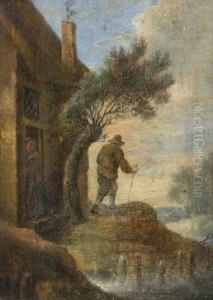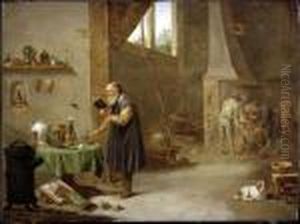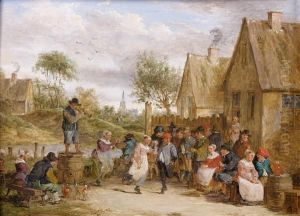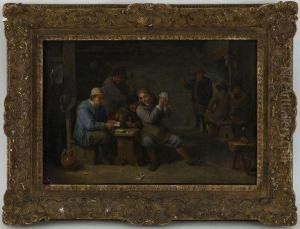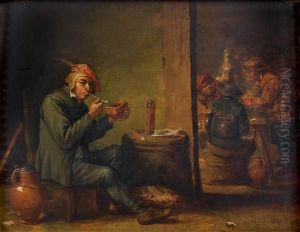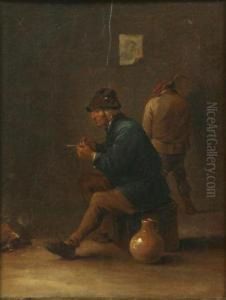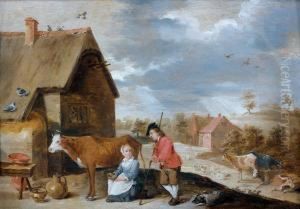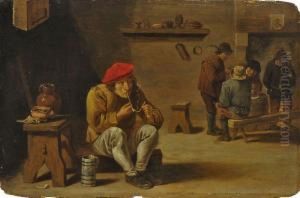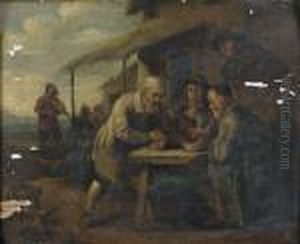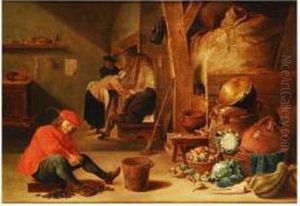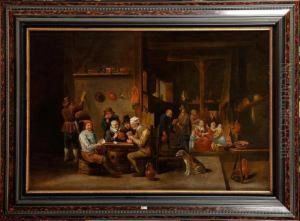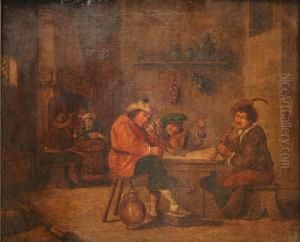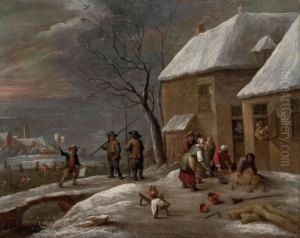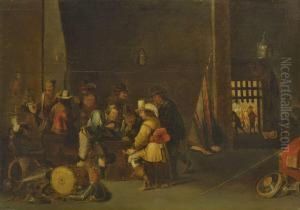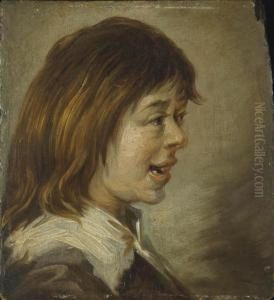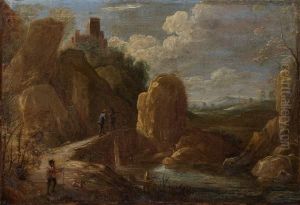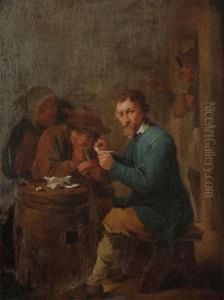David Teniers De Jonge Paintings
David Teniers the Younger, born on December 15, 1610, in Antwerp, was a prominent Flemish painter, draughtsman, printmaker, miniaturist, copyist, art curator, and dealer. He hailed from a family of artists and was the son of David Teniers the Elder, who was his first teacher. Teniers the Younger is renowned for his prolific output and his versatility in depicting genre scenes, landscapes, and historical subjects with equal finesse. He became a master in the Guild of St. Luke at a relatively young age in 1632-1633, marking the beginning of a long and successful career. Teniers's work is characterized by a meticulous attention to detail, a vibrant palette, and an exceptional ability to convey light and texture. He was particularly adept at portraying everyday life with humor and empathy, often depicting peasants engaged in tavern scenes, festivities, or domestic activities. His landscapes and scenes of peasant life were influential in shaping the genre painting tradition in Flanders and beyond. In addition to his artistic achievements, Teniers played a significant role in the cultural life of his time. He served as the court painter to Archduke Leopold Wilhelm of Austria, the governor of the Spanish Netherlands. In this capacity, he was responsible for organizing and cataloging the Archduke's vast art collection, one of the most important of the era. Teniers documented this collection through his paintings, producing detailed gallery interiors that are invaluable records of 17th-century art collecting. Teniers also co-founded the Antwerp Academy of Art in 1663, underscoring his commitment to the education of future generations of artists. His influence extended through his students and through the wide dissemination of his works in prints, making him one of the most popular and imitated artists of his time. David Teniers the Younger passed away on April 25, 1690, in Brussels. His legacy lives on through his vast oeuvre, which continues to be celebrated for its charm, technical skill, and insight into 17th-century Flemish life.
